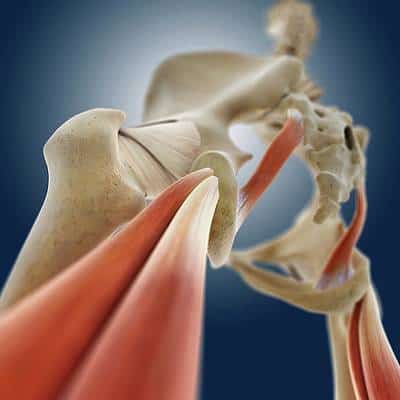Hip Extension: How Important is this Motion and How Do We Measure it Functionally?
The majority of us are noting a quad-dominant trend in our patients and athletes. This imbalance is partially due to the lack adequate hip extension.
During a recent clinical training session for hip mobilizations, a conversation with our staff led me to consider hip extension more carefully. Several clinicians admitted that they typically do not put a lot of emphasis on assessing hip extension at any point during the episode of care. One therapist pointed out that it was often difficult to get patients, especially geriatric patients, prone to measure hip extension. This conversation made something click. I questioned how valid is a prone passive range of motion measurement. Is this measurement functional? It is certainly not in weight bearing. Granted, there are some activities which requires hip extension in this position such as swimming, but for most of our patients/athletes, functional hip extension occurs in weightbearing and in an upright position. Even if PROM in prone is “within functional limits”, it does not indicate that the patient can actively access this range especially with closed-chain activities.
Another consideration this discussion posed was why is hip extension important. It is such a small degree of motion to begin with. I many skilled clinicians could not give a comprehensive explanation of why hip extension is so vital to our function and why we should be more diligent measuring it.
What Are the Hip Extensors?
Before we talk about valid ways to measure functional hip extension, lets dive into how hip extension makes an impact.
The primary hip extensors musles are:
- Gluteus maximus
- Semitendinosus
- Semimembranosus
- Biceps femoris—long head
- Adductor magnus—extensor head
What Are the Actions of the Hip Extensors?
The hip extensors are used during activities involving upward and forward propulsion like jumping, running, stair climbing, and transitioning from sitting to standing. When the femur is stabilized, the hip extensors can posteriorly tilt the pelvis.
Why Do We Need Hip Extension?
Hip extension helps improve postural alignment. Sufficient hip extension will decrease the incidence of low back pain, knee pain, limited ankle mobility or ITB syndrome that could be a result of poor posture and weak hip extensors.
If our patients lack hip extension, their body will compensate achieve it. Often, this compensation comes from the lumbar spine. When we can’t get our leg behind us during the push off phase of the gait cycle, the lumbar spine extends to achieve the motion. This places strain and compression on the lumbar spine.
When hip extension is lacking, the gluteus maximus cannot work effectively. In some cases, to compensate for this lack of power, patients will recruit the adductor magnus and/or the hamstrings to extend the hip (although this is not their primary jobs). Recruiting the adductor magnus and hamstrings to extend the hip may overwork these muscles, resulting in muscles strains. If your patient presents with chronic groin or hamstring injuries, it may be directly related to limited functional hip extension.
On down the chain, the calves can become overworked due to a lack of hip extension. The “push off” phase of the gait cycle will rely on plantar flexion of the ankle resulting in decreased flexibility of the gastroc and soleus muscles. This deviation can contribute to plantar fasciitis, Achilles tendinopathy, and knee issues. Again, injuries as the direct result of limited hip extension.
How Do We Measure Functional Hip Extension?
Like many other clinicians, I was trained to measure hip extension with the patient in prone while utilizing a goniometer. After speaking to many new graduates, it appears that this continues to be the standard method taught to physical therapists.
After a discussion with my peers, I considered there must be a more appropriate method to measure and monitor hip extension in a more functional position. I dove into the research and found that there is a valid, reliable way to measure hip extension in weight bearing. This test, known as the Posterior Standing Overhead Reach Test (SOAR), was developed to measure closed chain hip extension in a more functional manner than the more common prone hip extension measure. This test is cheap, easy to reproduce, and has been shown to provide reliable results.
What Do We Do About Limited Hip Extension?
The first priority is to restore functional hip mobility. Accessing the cause of the restrictions and providing proper interventions to restore flexibility and mobility should are crucial to regaining normal biomechanics. Next and equally important, we need to reeducate the glutes and strengthen them in them new available range of motion. Note that some of your patients may have full range of motion but may not access the entire range of motion. These patients will require cueing and education on utilizing their available range. For those who are restricted, you will have to strengthen and reeducate them in this new available range of motion.
Into Practice
If your patient presents with lumbar or lower extremity complaints, take a few minutes to assess closed chain hip extension. Observe functional ROM, gait mechanics, and the patient’s specific functional activities to determine if lack of hip extension can be contributing to their dysfunction. Observing and restoring hip extension may prevent recurrent injuries and improve performance of ADLs and sport specific activities.


